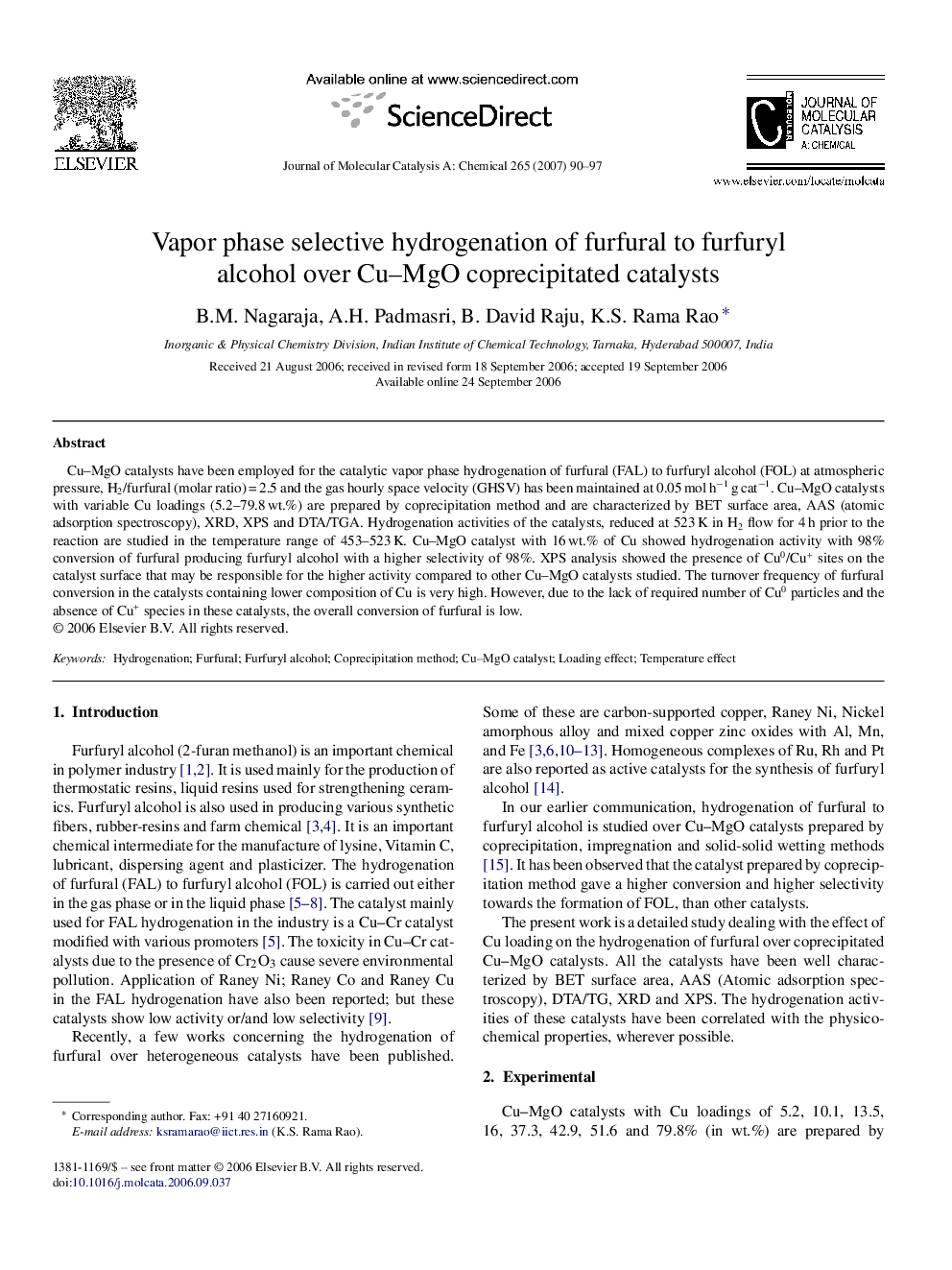| کد مقاله | کد نشریه | سال انتشار | مقاله انگلیسی | نسخه تمام متن |
|---|---|---|---|---|
| 68093 | 48503 | 2007 | 8 صفحه PDF | دانلود رایگان |

Cu–MgO catalysts have been employed for the catalytic vapor phase hydrogenation of furfural (FAL) to furfuryl alcohol (FOL) at atmospheric pressure, H2/furfural (molar ratio) = 2.5 and the gas hourly space velocity (GHSV) has been maintained at 0.05 mol h−1 g cat−1. Cu–MgO catalysts with variable Cu loadings (5.2–79.8 wt.%) are prepared by coprecipitation method and are characterized by BET surface area, AAS (atomic adsorption spectroscopy), XRD, XPS and DTA/TGA. Hydrogenation activities of the catalysts, reduced at 523 K in H2 flow for 4 h prior to the reaction are studied in the temperature range of 453–523 K. Cu–MgO catalyst with 16 wt.% of Cu showed hydrogenation activity with 98% conversion of furfural producing furfuryl alcohol with a higher selectivity of 98%. XPS analysis showed the presence of Cu0/Cu+ sites on the catalyst surface that may be responsible for the higher activity compared to other Cu–MgO catalysts studied. The turnover frequency of furfural conversion in the catalysts containing lower composition of Cu is very high. However, due to the lack of required number of Cu0 particles and the absence of Cu+ species in these catalysts, the overall conversion of furfural is low.
Cu–MgO catalysts with variable Cu loadings (5.2–79.8 wt.%) are prepared by coprecipitation method. Hydrogenation activities of the catalysts, reduced at 523 K in H2 flow for 4 h prior to the reaction are studied in the temperature range of 453–523 K. Cu–MgO catalyst with 16 wt.% of Cu showed hydrogenation activity with 98% conversion of furfural producing furfuryl alcohol with a higher selectivity of 98%. The BET surface area started increase with increase in Cu loading and reaches a maximum of 46 m2 g−1 at a Cu loading of 16 wt.% and thereafter reduced with further increase in the Cu content probably due to the formation of larger crystallites of CuO. XPS analysis showed the presence of Cu0/Cu+ sites on the catalyst surface (16 wt.% Cu) that may be responsible for the higher activity compared to other Cu–MgO catalysts studied. The turnover frequency of furfural conversion in the catalysts containing lower composition of Cu is very high. However, due to the lack of required number of Cu0 particles and the absence of Cu+ species in these catalysts, the overall conversion of furfural is low. Figure optionsDownload as PowerPoint slide
Journal: Journal of Molecular Catalysis A: Chemical - Volume 265, Issues 1–2, 16 March 2007, Pages 90–97